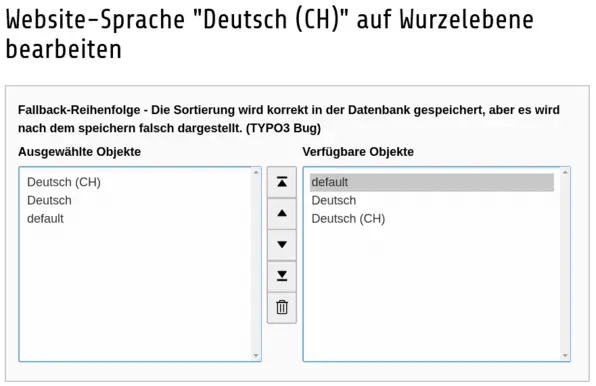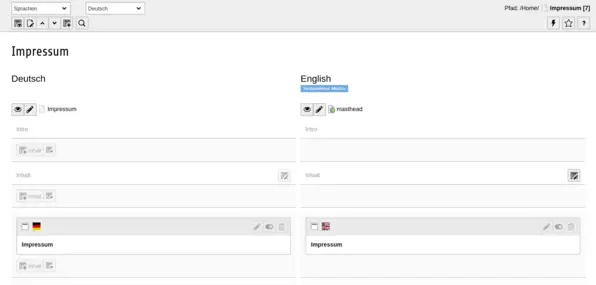Setting up Multiple Languages Wwith our Support
The Website-Base uses an initially determined base language as the default language for the entire website. With our help, any number of additional translations can be created on top of the default language.
When creating new language versions, we ensure that all background configurations for each language are set correctly. We add all additional languages in the TYPO3 backend, link them neatly in the code and take care of the search engine optimization. We also configure so-called fallbacks according to your wishes and implement a language change function in the front-end, so that site visitors can call up their desired language at any time.
Fallback Chains
The fallback chains are settings that determine how the website behaves if translations are not available on the invocation of a page. By default, missing translations always output the content in the website's default language. The fallback chains allow to individually set which language to substitute for each language when translations are missing.
For example, a Swiss company that has an English website with a German translation can create a Swiss German translation. By default, pages without translations would be displayed in the English default language.
However, it can be determined by the fallback chain that missing Swiss German translations are replaced by the usual German translations. If the German translations are missing as well, the English language version will be output.
Search Engine Optimization
Just as we always do search engine optimization for monolingual websites, we also make sure that search engines do not struggle to distinguish between different language versions. For this purpose, among other things, the necessary hreflang HTML tags are set so that search engines recognize which page should be called by default and for which languages alternative pages are available.
Simplified Management of Multiple Languages
Visibility Settings
The Website-Base provides advanced visibility settings that allow you to customize the behavior of individual elements or pages for each language in which the site is available. These settings take the configuration of the fallback chain into account.
This makes it possible to set the display of each element according to different behavior patterns, depending on the default language, the fallback chain, and existing translations:
- available: This is the default functionality. In any case, items will be displayed in the next available language according to the fallback chain.
- force: If a translation exists and the default language is deactivated, the display of the translation can be forced.
- only if translated: The element is displayed if a translation exists.
- or in fallback: If no translation exists, the element is output in the next available fallback language.
- not available: The element or page is not displayed on the website in this language.
To clarify how the result affects the front-end, the Settings window displays whether a translation is available in the language and whether the element or page with the selected settings is visible. However, a check mark under "Visible" may also mean that only a fallback language is available and displayed on the page.
Translation Mode
Translations can be created page by page using the Website-Base by any backend user, especially editors or even translators.
When creating a translation, all content elements of the source page are immediately transferred to the translated page and linked to the original language.
As a result, all translations are directly linked to the base language. So if a content item in the default language is deleted or moved, that automatically happens on the pages of all translations as well. In the translations, the structure of the page cannot be changed, but texts and images can be edited in their entirety.
Thus, a true translation mode has been created, which keeps each website consistent in presentation and structure in all languages.
Would you like to know more?
All information about the available editions can be found on the webpage for our TYPO3 Website-Base. You have the possibility to get a Website at a Fixed Price or you decide for a Website as a Service package, with which no further costs for hosting or security and function updates will come up to you.


